| Umělec magazine 2004/3 >> What’s Sri Chinmoy Doing Here? | List of all editions. | ||||||||||||
|
|||||||||||||
What’s Sri Chinmoy Doing Here?Umělec magazine 2004/301.03.2004 Jiří Ptáček | en cs |
|||||||||||||
|
Not long ago, when I was thinking about writing an essay about the artwork of Sri Chinmoy, Jesper Alvaer, a Norwegian artist living in Prague, stopped by. Alvaer took an interest in this, and we began to discuss Chinmoy’s drawings and paintings. He told me an interesting story.
Once Alvaer attended a Chinmoy meeting. As he watched Chinmoy sitting on a platform, he caught sight of a woman nearby whose behavior was significantly different from that of others. The crowd concentrated on Chinmoy’s contemplative music, but the woman seemed to be experiencing absolutely nothing. Alvaer wanted to know what she was up to and, after the conclusion of the meeting, he went after her. The woman, meanwhile, also left the podium and, to Alvaer’s surprise, joined with Chinmoy. He realized that the woman had been attending to Chinmoy as the personal assistant of the maestro. “While people meditated, she apparently was thinking about how to ensure everything would be arranged and whether the limosine would show up in time,” Alvaer said, finishing his story. Political Freedom Like all public events, even annunciations must be carefully organized. Chinmoy’s assistent didn’t do anything else other than her work. Nevertheless, it would appear that Chinmoy’s activities are wholly unique. Sri Chinmoy Kumar Ghose was born in 1931 in Shakpure, a village in Eastern Bangladesh. When he was thirteen, he entered an ashram in Pondicherry, India. Because his studies were connected with artistic activites and sport, he began to write poems and compose songs. He arrived in the United States in 1964 and, two years later, began to find himself, spiritually. Official biographies relate how in 1970 he started to write poetry and songs in Bengalese and English, and also make thousands of drawings and paintings. From 1991 to now, he has limited his drawings to simple caligraphic sketches of a spirit bird. His web pages, www.srichinmoy.tv present thirteen million such sketches. Chinmoy himself likes to say that in a single day he will draw 70,000 and that his disciples will count them faithfully. Before we get to the unique core of Chinmoy’s process, let us digress briefly and look at two specifics that support his artistic activity and, in my opinion, its reception. Towards a Media Philosophy The drawings and paintings are for Chinmoy separate categories of expression. The author presents the number of drawings and paintings separately. Yet his painting cycles have a significant illustrative aspect. Most involve multiple bold brush stokes. One might think that Chinmoy’s painterly and illustrative might follow this rule: The Paintings are founded on bold, abstract gestures and a combination of more colors. The drawings then follow a dream to bring the impulse toward a specific form and monocolor. They are of course also quantitative variations in which the number of drawings exponentially transcend the number of paintings. The final distinction concerns the commentary for which Chinmoy insists on using. While he speaks about his paintings abstractly and simply, he expounds broadly about the Bird Spirits. Chinmoy also talks a lot about art in contemporary galleries; he displays a certain lack of faith and understanding. He uses the Bengalese label, Jharna Kala (fountain-art), to describe his own art, but he also uses English expressions such as art, drawing, painting and Exhibition. Towards Theory in an Unwanted Context. Sri Chinmoy has concentrated his spiritual activity in the West. As such, his artwork, without regard to an original process-oriented contemplative context, has entered European and American Culture. If we were to compare his artistic work with Western art, we’d be surprised about his evident links with an array of aspects of artistic art in the twentieth century. One might talk about similarities with European Tachism, the paintings of Hans Hartung, Pierre Soulagese and Georges Mathieu. The Iconography of a bird, as bearer of positive prophesies, may have deeper roots (the Annunciation, Saint Gregory, Saint Francis of Assisi). Nevertheless, at a new peak of modernity Pablo Picasso’s dove of peace was realized once again. I do not present these consequences for formal reasons. Significant is that the dominant modern interpretation in Western artistic theory, within which the traditions of Hartung and Picasso are emphasized, inflicted significant damage on public reflections of art, and most common understanding of artistic work. Chinmoy’s art is such that it speaks, albeit unintentionally, to a broad audience in the sphere of art - not only of the spiritual sort. (as an aside, were we to discuss the visual presentations of other influential spiritual groups, like Jehova‘s witnesses, we‘d arrive at a similar conclusion). Sri Chinmoy in this sense can be sure that his creations will be greeted favorably. Should we persist in acknowledging the social stereotypes of society‘s understanding of what is and isn‘t art, it wouldn‘t be so good to ignore such specific phenomena. Thus, rather than being derrided, it ought to become the subject of thorough study. Performative and Distribution Tactics The performances of Sri Chinmoy are exceptional even in comparrison with other Eastern teachers working in the West. The tendency towards accumulation works on many levels. Chinmoy embarks on many sojourns and frequently appears in public where he combines a variety of activities: He plays on a number of musical instruments, reads poetry, sings and even jogs and lifts weights. This diversity supports the center depending on his name, and which one, is one of an array of singular spiritual acts: without asking, he mentions places that have significance in his planetary concept. Visual work is related to all of that. I said that his visual work is bound with all the teaching, but it approaches the appearance of Western art, and uses its terminology. Chinmoy organizes exhibitions-and they are always quantitative. In New York City he presented at one exhibition a hundred thousand Bird Spirits; in Ottowa, there were seventy thousand. There was even an exhibition with a million drawings. “I represent unity in multiplicity. Each bird is different, but if you look at them, you feel their unity,” he says. He is also very generous with a panoply of celebrities. In 1991, Raisa Gorbachev was given a package with a hundred thousand of the Bird Spirits. For this chosen tactic, it is typical that the numbers are emphasized as a consequence of reaching peace and interior freedom. Should we examine Chinmoy from the perspective of artistic tendencies that incorporate technicalities of distribution, Chinmoy’s example could be described as anti-Benjamin. He adheres to the idea of originality yet his artworks are multiplied and distributed in the extreme. In an era when reproductions are made easy through technology, Chinmoy’s approach might be considered archaic; but the processes renew the aura of the artefact. The significance of the fundamental unit is emphasized, but it is dependent on a collective identity. And he endows such sense to the order of thousands, hundreds of thousands and millions at a time that there already exist inimitable records. Records as Instrument of Propaganda The success of the New Age movement or synthetic drugs, through which we always find a connection with a spiritual road and visual art, suggest that in the least a part of the population seeks to a return to its cosmic dimensions. Chinmoy offers it straight up. And as the advertizing industry has taught us, quantification is an effective way of influencing the opinions of individuals and the strength of groups. And if in the most powerful representatives of the strength of civilization the individual becomes productive, then it is up to us, the aspiration to magical mass of art to give life to artistic connections with art, its production and its higher spiritual sense. Sri Chinmoy follows these critera—he even sets these criteria. We could perhaps begin with such distance that in his case we could talk about advertising approaches through which slogans connect ideas with spiritual contents (internal peace, freedom, light) and the notions of the internal relationship to the sphere of art (art, work, painting, drawing, exhibition, and original) and production-manufacture (thousand, million, thirteen million…). The link between these notions is indirect, but to the conversation even the material of Sri Chinmoy these ideas have always been linked. Indirect relations of them follow apparently an effective instrument of ideological propaganda than would be visible at first. Scattered Advertisements In order that propaganda be clear, it is necessary that it be localized. For Sri Chinmoy it isn’t so easy, because he is entering the decentralized ideological field of today’s Western society. It has no empire, dominates nobody and doesn’t even speak of domination as it is dispersed. He uses the permeable frontier between nation and state. On stops of his nomad team, he establishes cells where his artistic work is an inseparable part of his universal spiritual concept. US President George W. Bush’s meeting two years ago with hollywood filmmakers, was controversial indeed. But his attempt to influence the film industry penetrated into the realm of ancient simply localized style of propaganda. If we were to find hidden signs of propaganda, it would be because we are really capable of identifying their source and purpose. Scattered propaganda of a similar debate always gets away. But it seems that that is the most indicative for the age of information technology and free movent about “our” side of the planet. We needn’t be scared that Sri Chinmoy might be preparing something dangerous. Whether he is a true prophet or not, his self-representation is essentially naive. But he does introduce a model under which we can use stereotypical social reflections of art for a more fundamental understanding of art.
01.03.2004
Recommended articles
|
|||||||||||||
|
04.02.2020 10:17
Letošní 50. ročník Art Basel přilákal celkem 93 000 návštěvníků a sběratelů z 80 zemí světa. 290 prémiových galerií představilo umělecká díla od počátku 20. století až po současnost. Hlavní sektor přehlídky, tradičně v prvním patře výstavního prostoru, představil 232 předních galerií z celého světa nabízející umění nejvyšší kvality. Veletrh ukázal vzestupný trend prodeje prostřednictvím galerií jak soukromým sbírkám, tak i institucím. Kromě hlavního veletrhu stály za návštěvu i ty přidružené: Volta, Liste a Photo Basel, k tomu doprovodné programy a výstavy v místních institucích, které kvalitou daleko přesahují hranice města tj. Kunsthalle Basel, Kunstmuseum, Tinguely muzeum nebo Fondation Beyeler.
|






















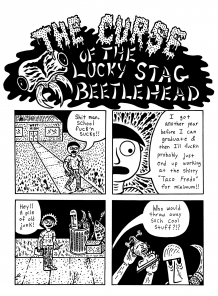




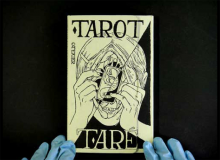
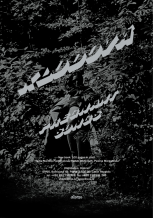
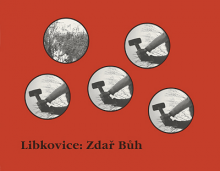
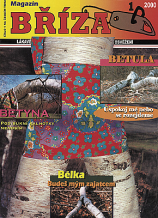


 New book by I.M.Jirous in English at our online bookshop.
New book by I.M.Jirous in English at our online bookshop.
Comments
There are currently no comments.Add new comment